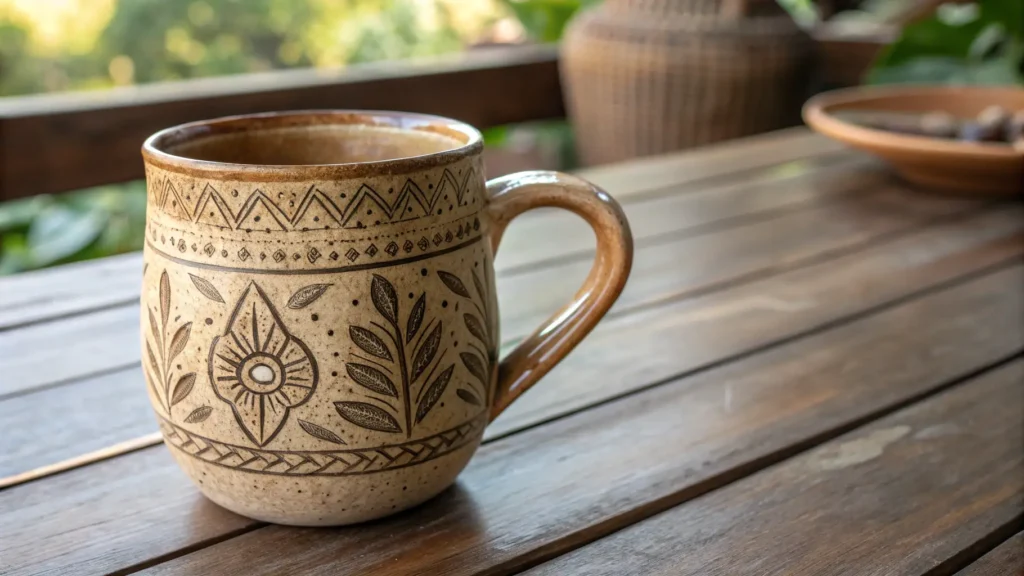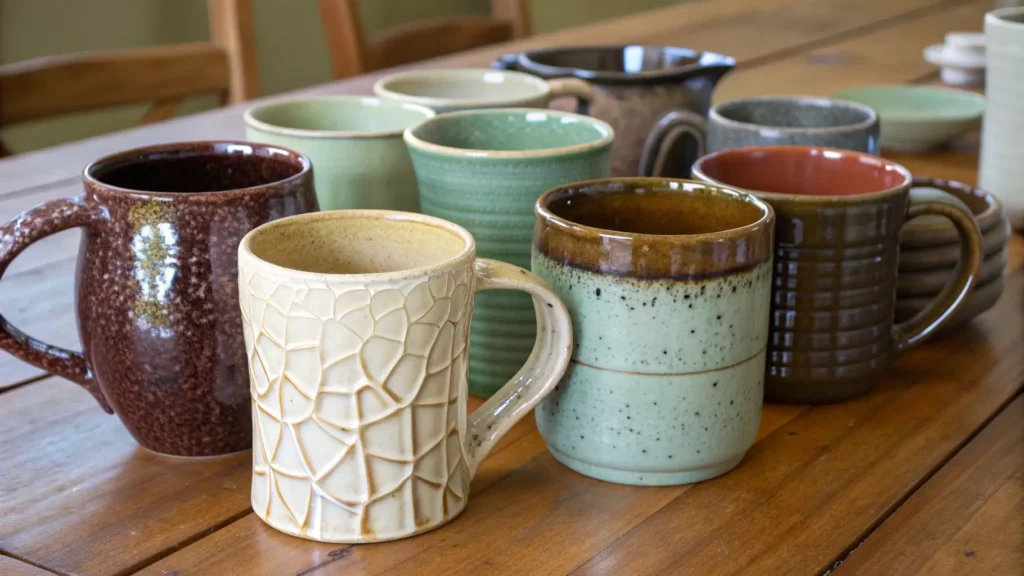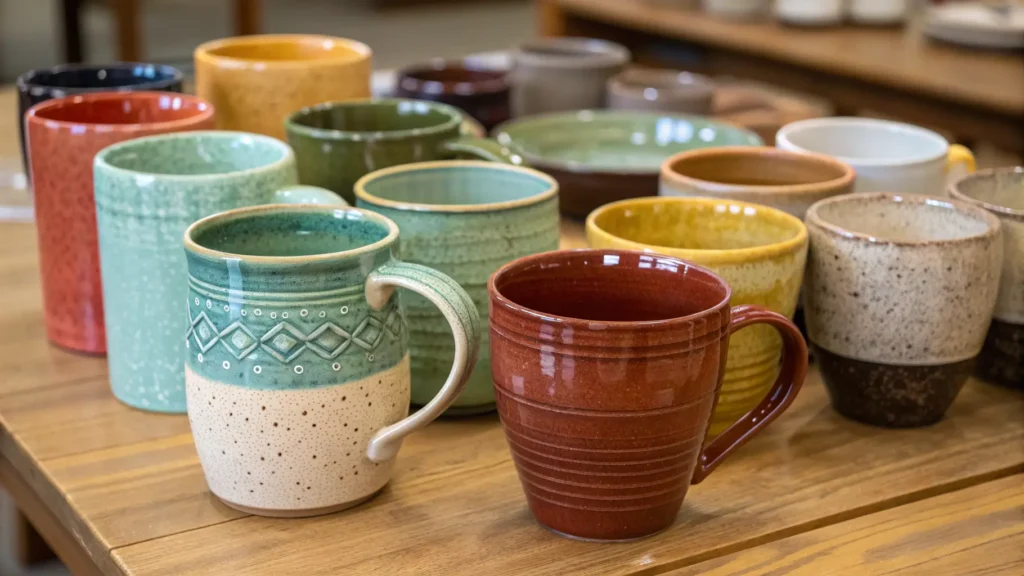Unlocking the true value of a handmade mugs sell can feel like a mystery. Whether you’re an artisan struggling to price your beautiful creations fairly or a buyer curious about the investment behind unique pottery, understanding the market is essential. This definitive guide will cut through the guesswork, providing specific, data-informed price ranges across various mug types, materials, and selling platforms. We’ll also give you a comprehensive, actionable framework to confidently calculate and optimize your own pricing, ensuring your passion becomes a profitable endeavor.

TABLE OF CONTENTS
Quick Answer: Average Handmade Mug Prices at a Glance
So, how much do handmade mugs actually sell for? Generally, you can expect handmade mugs to range from $25 to over $150, with the average falling between $40 and $80. This broad range reflects significant differences in materials, design complexity, artist skill, and where the mug is sold. To give you a clearer picture, here’s a quick summary of typical price ranges:
| Category | Typical Price Range | Key Defining Characteristics |
|---|---|---|
| Basic/Functional | $25 – $45 | Simple thrown forms, standard glazes, mass-produced handmade feel. |
| Artisan/Mid-Range | $45 – $85 | Unique glazes, subtle hand-painted elements, distinctive artist style. |
| High-End/Custom | $85 – $150+ | Intricate carving, bespoke commissions, rare materials, renowned artist. |
These ranges provide a starting point. The following sections will delve into the specific factors and nuances that drive these handmade mug prices, helping both buyers and makers understand the true value.
Factors That Heavily Influence Handmade Mug Prices
The price of a handmade mug isn’t pulled from thin air; it’s a careful calculation reflecting numerous inputs. Understanding these factors is crucial for both setting a fair price and appreciating the craftsmanship involved.
- Materials & Production Costs: The type of clay (e.g., affordable earthenware vs. high-fired porcelain), glazes, firing costs (kiln electricity/gas), and tools (pottery wheel, brushes, carving tools) all contribute. Porcelain, for example, typically costs more than stoneware due to its delicate nature and higher firing temperatures, often translating to higher ceramic mug prices.
- Labor & Time Investment: This is often the most undervalued component. Throwing a mug, trimming, attaching a handle, carving, hand-painting, glazing, and multiple firings take significant time. A simple mug might take 2-3 hours of active labor over several days, while an intricately carved or painted piece could easily demand 10+ hours.
- Skill, Experience & Artist Reputation: A seasoned potter with years of experience and a distinct, recognizable style can command higher prices than a beginner. Their perfected techniques, consistency, and unique artistic voice add immense value. A well-known artist’s work naturally has a higher pottery mug value.
- Design Complexity & Uniqueness: Is it a simple, minimalist mug or an elaborate piece with intricate carvings, unique textures, or multi-layered glazes? Custom work, limited editions, or mugs with highly complex designs (like detailed hand-painted scenes or sculptural elements) naturally fetch premium handmade mug prices due to the specialized skill and time involved.
- Overhead Costs: These are the hidden but essential costs of doing business. They include studio rent or mortgage, utilities (electricity for the kiln!), marketing efforts, website hosting, insurance, and platform fees for online sales. These costs must be distributed across all products for sustainable operation.
- Market Demand & Trends: What are buyers looking for? Is there a current trend for minimalist, rustic, or brightly colored mugs? High demand for a specific style or from a popular artist can drive prices up. Conversely, an oversaturated market might require more competitive pricing.

Handmade Mug Price Ranges by Type & Style
The “average price handmade coffee mug” varies dramatically based on its specific characteristics. Here, we break down expected handmade mug prices by common types and styles, addressing the nuance often missing in general guides.
| Mug Type & Style | Typical Price Range | Characteristics & Price Drivers |
|---|---|---|
| Basic Thrown Stoneware | $25 – $45 | Simple form, single solid glaze, sturdy, functional. Price reflects foundational skill and materials. |
| Hand-Painted Artistic | $45 – $85 | Unique glazes, subtle hand-painted designs, distinct artist touch. Higher price for artistry and detail. |
| Porcelain/High-Fired | $60 – $100 | Finer clay, higher firing temps, often delicate or translucent. Higher material and firing costs. |
| Carved/Textured | $55 – $95 | Intricate surface carving, unique textures applied by hand. Reflects significant labor time and skill. |
| Custom/Personalized | $85 – $150+ | Commissioned pieces, specific imagery, names, or bespoke designs. Accounts for unique design work and client communication. |
| Large/Specialty Capacity | $40 – $70 | Over-sized coffee mugs, unique forms like travel mugs (without lid). Larger material use, sometimes more complex handling. |
- Basic / Functional Mugs: These are often simpler, perhaps made in larger batches, and focus on utility with an artisan touch. Think sturdy, comfortable mugs with a consistent, solid glaze. Their cost to make handmade mug is lower, reflected in their more accessible price.
- Artisan / Designer Mugs: These mugs showcase more artistic expression. They might feature unique glaze combinations, subtle hand-painted motifs, or an artist’s signature style that elevates them beyond pure function. The “pottery mug value” here includes the artist’s creative input and brand.
- Custom / Personalized Mugs: Commissioned pieces, whether for a specific design, an engraved message, or a portrait, always command higher prices. This is due to the individual design process, client communication, and the unique, one-off nature of the work. This directly answers “how much should I charge for a custom ceramic mug?”
- Specialty Materials & Techniques: Mugs made from fine porcelain, raku-fired (a specialized, dramatic firing process), or incorporating unique inclusions (like crushed glass or minerals) involve higher material costs and often more advanced, riskier techniques. These factors significantly impact the final price.
- Size & Capacity: While not the primary driver, a very large mug (e.g., 20oz+ capacity) uses more clay and glaze, and often requires more robust handling, which can add a few dollars to the price compared to a standard 10-12oz mug or a smaller espresso cup.

Where Do Handmade Mugs Sell Best? Price Comparisons by Platform
The platform you choose to sell your handmade mugs can significantly impact the pricing strategy and the prices you can reasonably charge. Each channel has its own audience, fee structure, and perceived value.
| Selling Platform | Typical Price Range for Similar Mug | Pros for Pricing | Cons for Pricing |
|---|---|---|---|
| Etsy | $30 – $75 | Wide audience, built-in trust, global reach. | High competition, fees, shipping logistics. |
| Craft Fairs & Markets | $35 – $80 | Direct connection, impulse buys, less competition. | Booth fees, travel costs, weather dependency. |
| Personal Website / Online Store | $40 – $100+ | Full control, no platform fees, brand building. | Requires own marketing, traffic generation. |
| Galleries & Boutiques | $60 – $150+ | High perceived value, curatorial approval. | Wholesale pricing, commission (often 50%), slower sales. |
| Commissions / Direct Orders | $85 – $150+ | Highest potential profit, personalized service. | Requires strong reputation, good communication. |
Etsy Handmade Mug Price Guide: What to Expect
Etsy is a go-to platform for handmade goods, but it comes with its own pricing considerations. Etsy mug prices are competitive, so strategic pricing is key.
- Etsy Fees: Be mindful of listing fees ($0.20 per listing, renewable every 4 months), transaction fees (6.5% of the sale price), and payment processing fees (3% + $0.25 per transaction in the US). These add up quickly.
- Shipping Costs: Often a major factor. Many Etsy sellers offer “free shipping,” which means you need to factor shipping costs into your mug’s base price. This is crucial for your Etsy mug prices to remain profitable.
- Researching Success: Spend time researching successful Etsy shops selling similar mugs. Analyze their pricing, how they describe their items, and their target audience. This helps benchmark what a fair price for a handmade mug might be on the platform.
- Pricing Strategies: Consider bundle deals (e.g., mug and coaster set), seasonal promotions, or tiered pricing (e.g., standard mug vs. custom add-on).
Example Etsy Price Calculation: Let’s say your cost to make a mug (materials + labor + overhead) is $20. You want a 50% profit margin and anticipate $10 in shipping.
- Desired Profit: $20 (cost) * 0.50 (profit margin) = $10
- Base Price (before fees/shipping): $20 (cost) + $10 (profit) = $30
- Factor in Shipping: $30 + $10 (shipping) = $40
- Estimate Etsy Fees (approx. 10% of sale, varies slightly): $40 * 0.10 = $4
- Adjusted Price for Fees: $40 + $4 = $44 (this is a simplified example; exact fees will depend on actual sale price) A common approach is to take your total cost (including shipping, if offering free shipping) and divide by (1 – total percentage of fees – desired profit margin percentage). For example, if total cost (including shipping) is $30, Etsy fees are ~10%, and desired profit is 50%: $30 / (1 – 0.10 – 0.50) = $30 / 0.40 = $75. This gives you a list price to aim for.
Craft Fair & Market Pricing Strategies for Mugs
Selling at craft fairs offers a direct connection with your customers, fostering impulse buys and a different pricing dynamic.
- Perceived Value: At a craft fair, customers can touch, feel, and inspect your mugs, which can justify higher prices than online. Emphasize the story behind your work.
- Bundling & Discounts: Offer small bundles (e.g., two mugs for a slight discount) or pair mugs with complementary items like tea towels or specialty coffee. People often buy more when they feel they’re getting a deal.
- Event Costs: Remember to factor in booth fees, travel expenses, accommodation, and the value of your time spent at the event when determining craft fair mug prices.
- Demographics: Tailor your pricing to the expected demographic of the market. A high-end art fair will support higher prices than a local community market. Display a clear handmade mug price guide for all items.
Calculating Your Price: Essential Formulas for Handmade Mug Makers
Accurate pricing starts with understanding your costs. These formulas provide a robust framework to ensure your handmade mugs are priced for both sustainability and profit.
- Cost-Plus Pricing: This is a fundamental method where you calculate all direct costs and then add a desired markup.
- Formula: (Materials Cost + Labor Cost + Overhead Cost) x (1 + Markup Percentage) = Selling Price
- Example: If materials are $8, labor is $15 (1 hour @ $15/hr), and allocated overhead is $7, your total cost is $30. With a 100% markup, your selling price is $30 x (1 + 1.00) = $60.
- Hourly Rate Pricing: Ideal for artists valuing their time and skill highly.
- Formula: (Time Spent (hours) x Hourly Rate) + Materials Cost + Overhead Cost = Selling Price
- Example: If a mug takes 3 hours of labor at $25/hour, materials are $8, and overhead is $7, the price is (3 x $25) + $8 + $7 = $75 + $8 + $7 = $90. This helps ensure you’re getting paid fairly for your time, addressing “how long does it take to make a handmade mug?”
- Value-Based Pricing: Setting your price based on the perceived value to the customer, uniqueness, and the emotional connection your work provides. This is where branding and storytelling become paramount. A unique, custom mug with significant artistic merit can command a much higher price based on its perceived value, regardless of its base costs.
- Competitive Pricing: Benchmarking against similar products in your market. While important for context, avoid simply undercutting. Focus on how your unique selling proposition (USP) justifies your price.
- Profit Margin Calculation: This ensures your business growth. Your profit margin is (Revenue – Cost of Goods Sold) / Revenue. Aim for a healthy margin (e.g., 40-60% for handmade goods) to cover unexpected costs, allow for investments, and pay yourself. This is critical for assessing “are handmade mugs profitable?”
Don’t Forget Your Hidden Costs! (The “Real” Overhead)
Many makers inadvertently undersell their work by overlooking crucial “hidden” costs. Accounting for these ensures your handmade mug prices are truly sustainable.
- Packaging Materials: Boxes, bubble wrap, tissue paper, labels, tape – these add up, especially for fragile items like mugs.
- Marketing & Photography: High-quality product photography, website design, social media advertising, print materials for fairs.
- Website/Platform Fees: Monthly subscriptions for e-commerce platforms, payment processing fees (beyond transaction fees).
- Tool Wear & Tear / Equipment Depreciation: Your kiln, pottery wheel, glazes, brushes, and carving tools have a lifespan and need eventual replacement or maintenance. Factor this in over time.
- Education & Skill Development: Workshops, online courses, books – investing in your craft improves your skill and justifies higher prices.
- Business Expenses: Taxes (income, sales), business insurance, legal fees, professional memberships, accounting software.
Hidden Cost Checklist:
- Shipping materials (boxes, tape, void fill)
- Product tags/labels
- Photography equipment/services
- Social media tools/ads
- Website hosting/domain
- Payment processor fees
- Kiln elements/repairs
- Pottery wheel maintenance
- Workshop/class fees
- Business insurance
- Tax preparation software/accountant
- Show applications/juried fees
Are Handmade Mugs Profitable? What to Consider for Sustainable Income
Yes, handmade mugs can absolutely be profitable, but it requires strategic thinking beyond just making beautiful pottery. A strong “profit margin handmade mugs” ensures your artistry can sustain you.
- Target Profit Margins: For handmade goods, aiming for a 40-60% gross profit margin is often recommended. This allows room for overhead, marketing, and a fair wage for yourself after direct costs are covered.
- Scalability of Production: While handmade implies individual attention, consider if your process can be slightly optimized for efficiency without compromising quality. Batching tasks (e.g., throwing all mugs at once, then all handles) can save time and improve consistency.
- Building a Strong Brand & Story: Your unique story, aesthetic, and brand identity allow you to justify higher prices. Customers connect with the person behind the art. Share your process, your inspiration, and the passion that goes into each piece to increase the perceived value of your handmade mugs.
- Marketing, Social Media, & Customer Engagement: Effective marketing showcases your work to the right audience. Engaging with customers builds loyalty and anticipation, allowing you to charge prices that reflect the quality and artistry. This helps answer “how do I increase the perceived value of my handmade mugs?” beyond just the physical product.
FAQs About Handmade Mug Pricing
What is a fair price for a handmade mug?
A fair price for a handmade mug covers all of the maker’s costs (materials, labor, overhead), includes a reasonable profit margin, and reflects the quality, uniqueness, and skill involved. For a functional, well-made mug, this typically ranges from $40-$80, but can go much higher for intricate or custom pieces.
How much should I charge for a custom ceramic mug?
Custom ceramic mugs generally start at $85 and can easily exceed $150+, depending on the complexity of the design, the time required for communication and creation, and the artist’s reputation. Always charge a premium for custom work due to the individualized attention.
How long does it take to make a handmade mug?
The active labor time to create a handmade mug varies widely, from 2-3 hours for a basic thrown piece to 10+ hours for highly intricate or hand-painted designs, spread over several days or weeks due to drying and firing times. This time significantly contributes to the final handmade mug price guide.
Are cheap handmade mugs worth it?
“Cheap” handmade mugs (e.g., under $20) often mean the artist is not covering their costs or valuing their time appropriately. While they might offer an accessible entry point, they may lack the durability, unique design, or artistic integrity of fairly priced pieces. Paying a fair price supports the artist and ensures higher quality.
How do I increase the perceived value of my handmade mugs?
Focus on exceptional craftsmanship, develop a unique artistic style, use high-quality materials, tell the story behind your creations, provide excellent customer service, offer beautiful packaging, and invest in professional photography and marketing.
Conclusion: Price Your Handmade Mugs with Confidence
Navigating the world of handmade mug prices doesn’t have to be overwhelming. By meticulously understanding your costs, evaluating the unique value of your craft, and strategically analyzing market trends and selling platforms, you can confidently determine a price that honors your artistry and ensures your business thrives. Remember, your handmade mugs are more than just functional items; they are pieces of art, infused with your skill, time, and passion. Armed with this ultimate guide, you now have the tools to set optimal prices, communicate your value effectively, and achieve sustainable success. Now go forth and price your handmade mugs with confidence!
